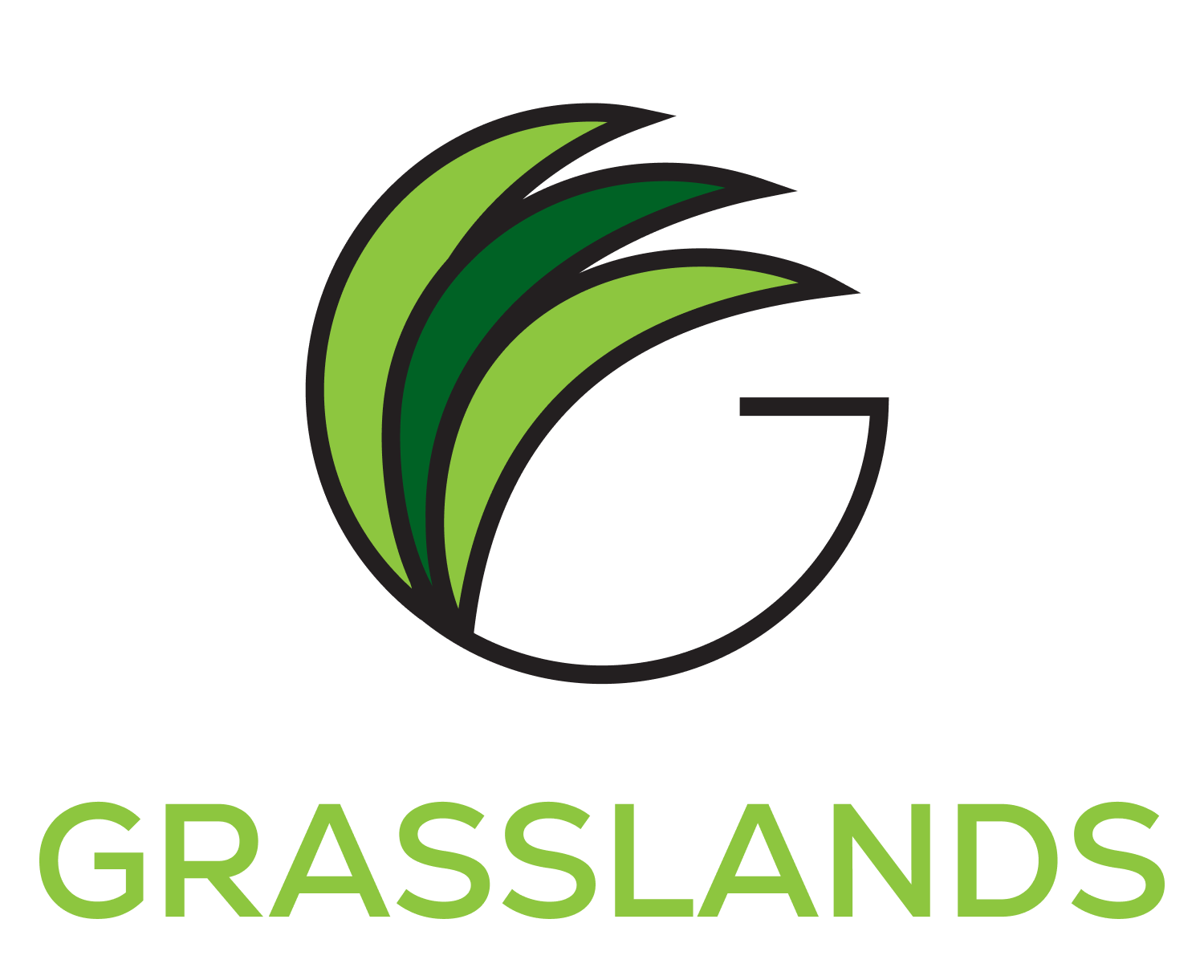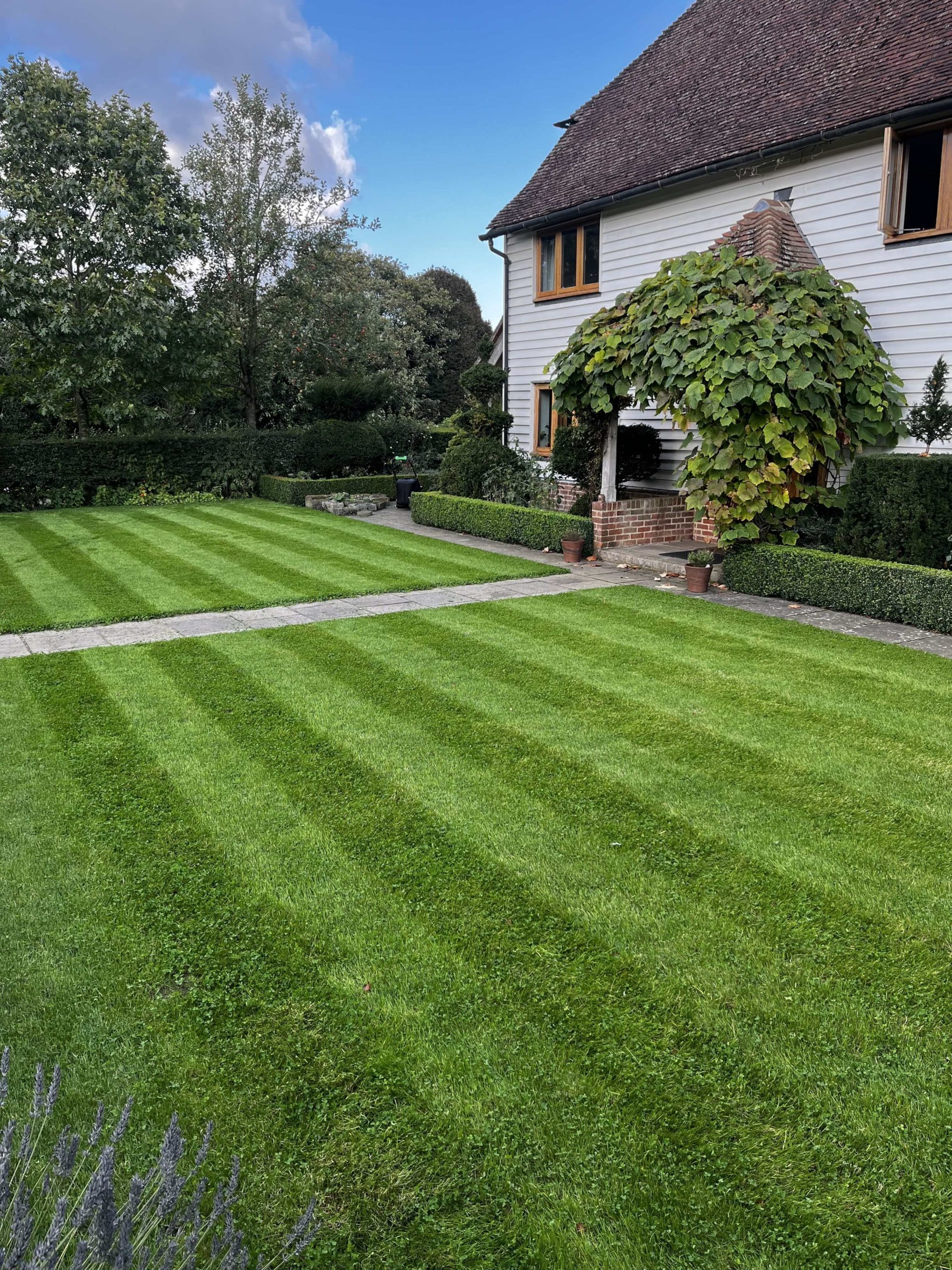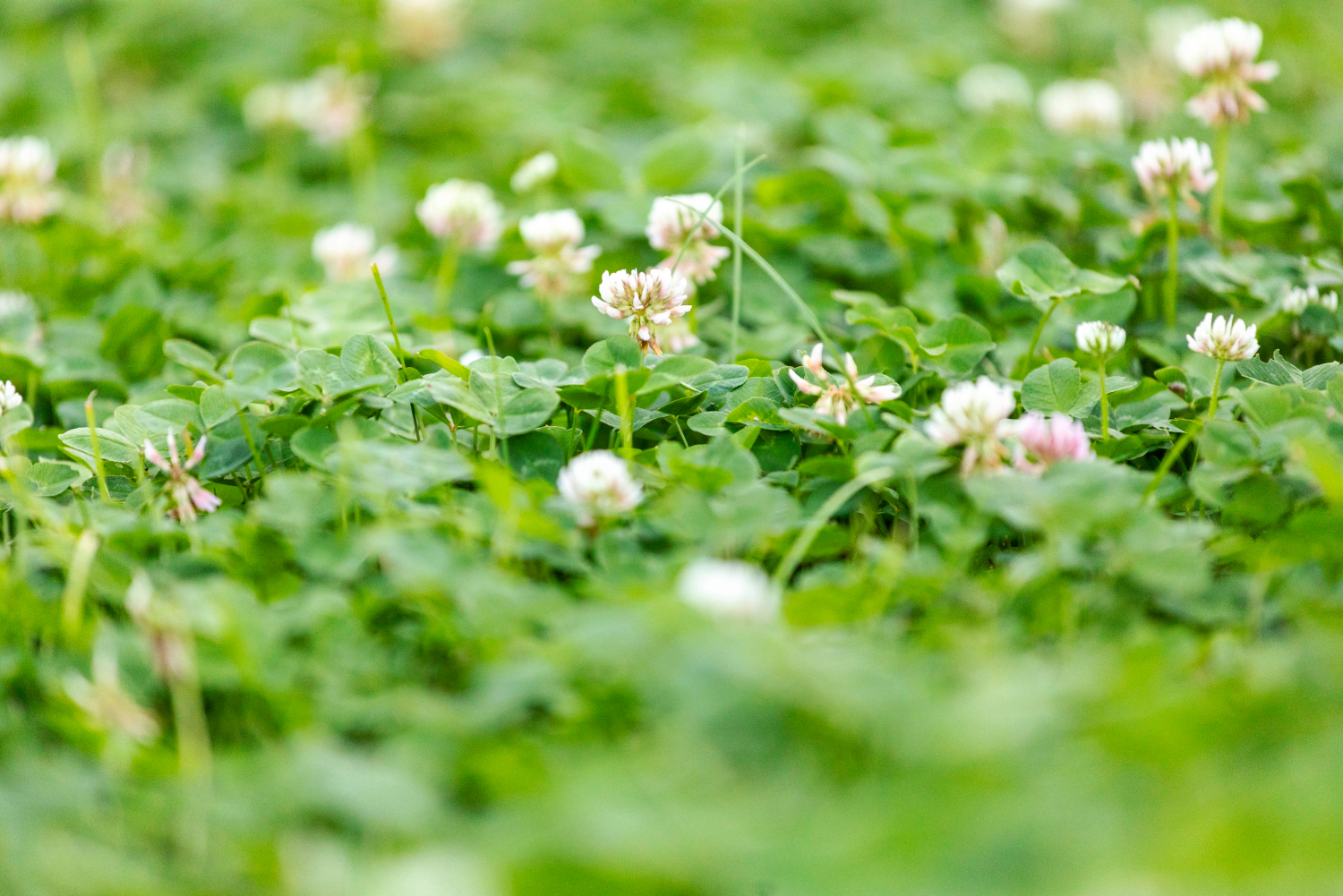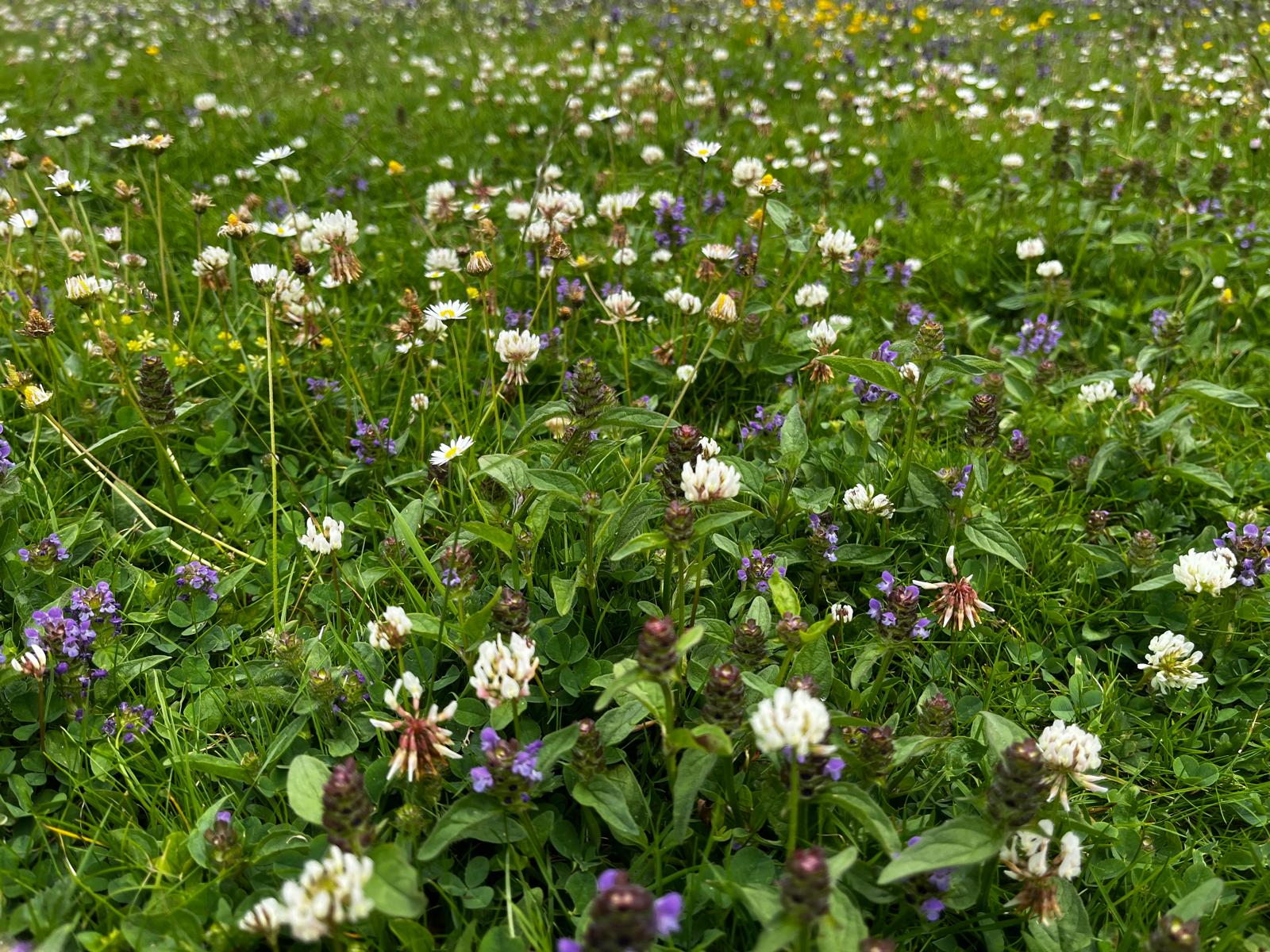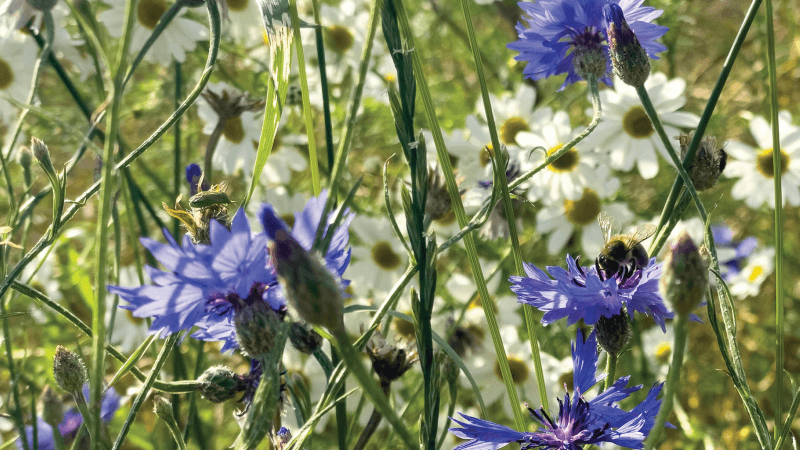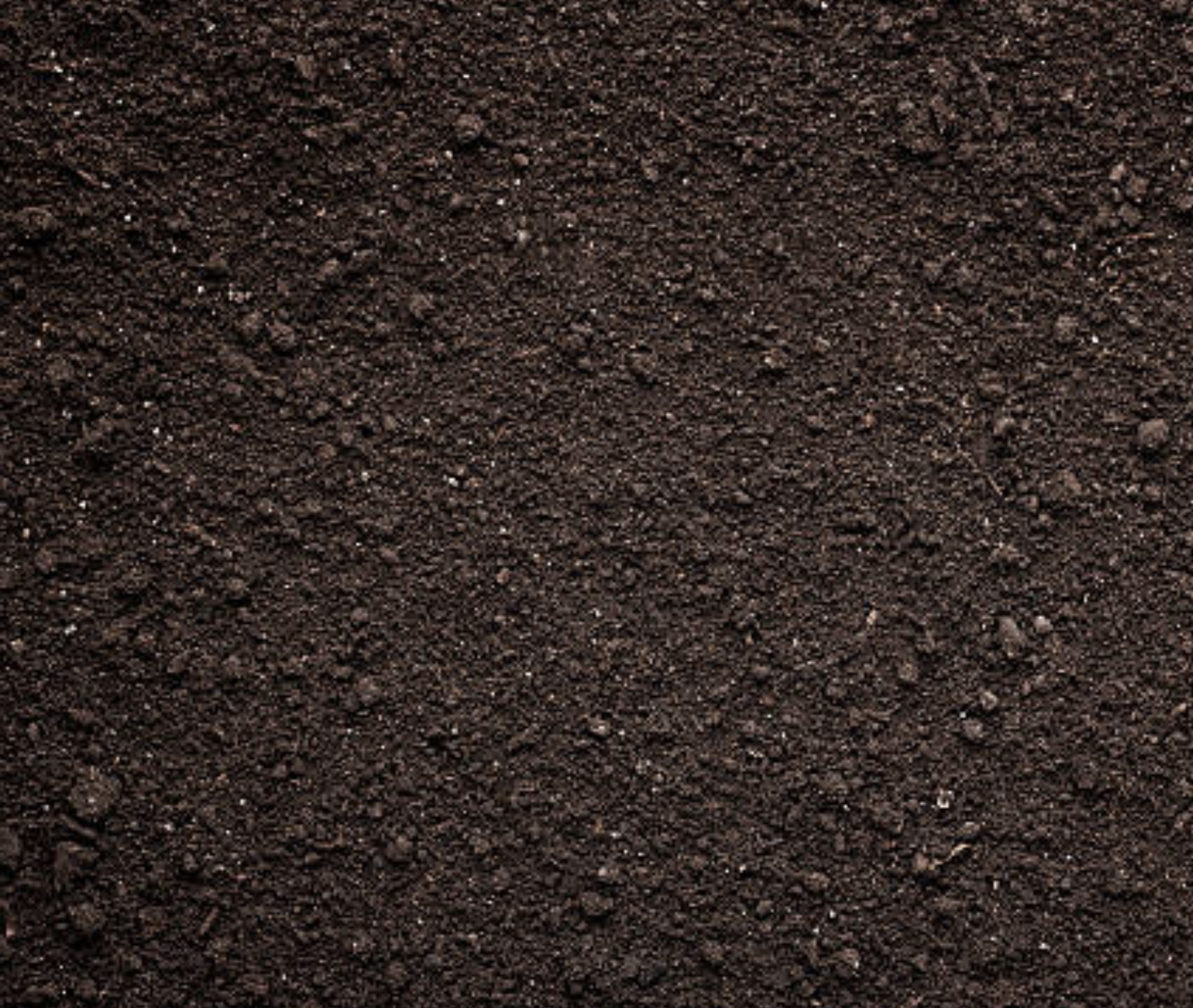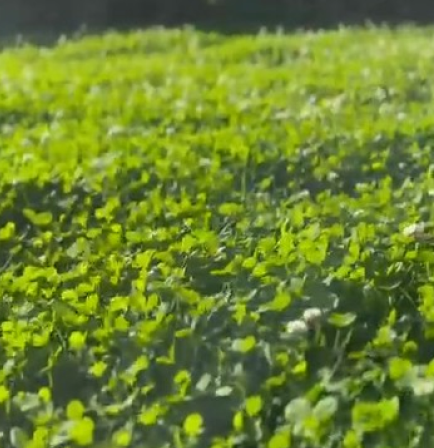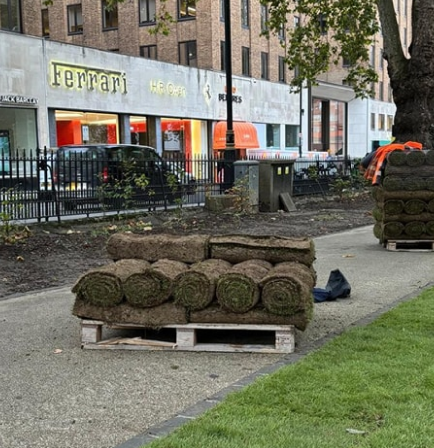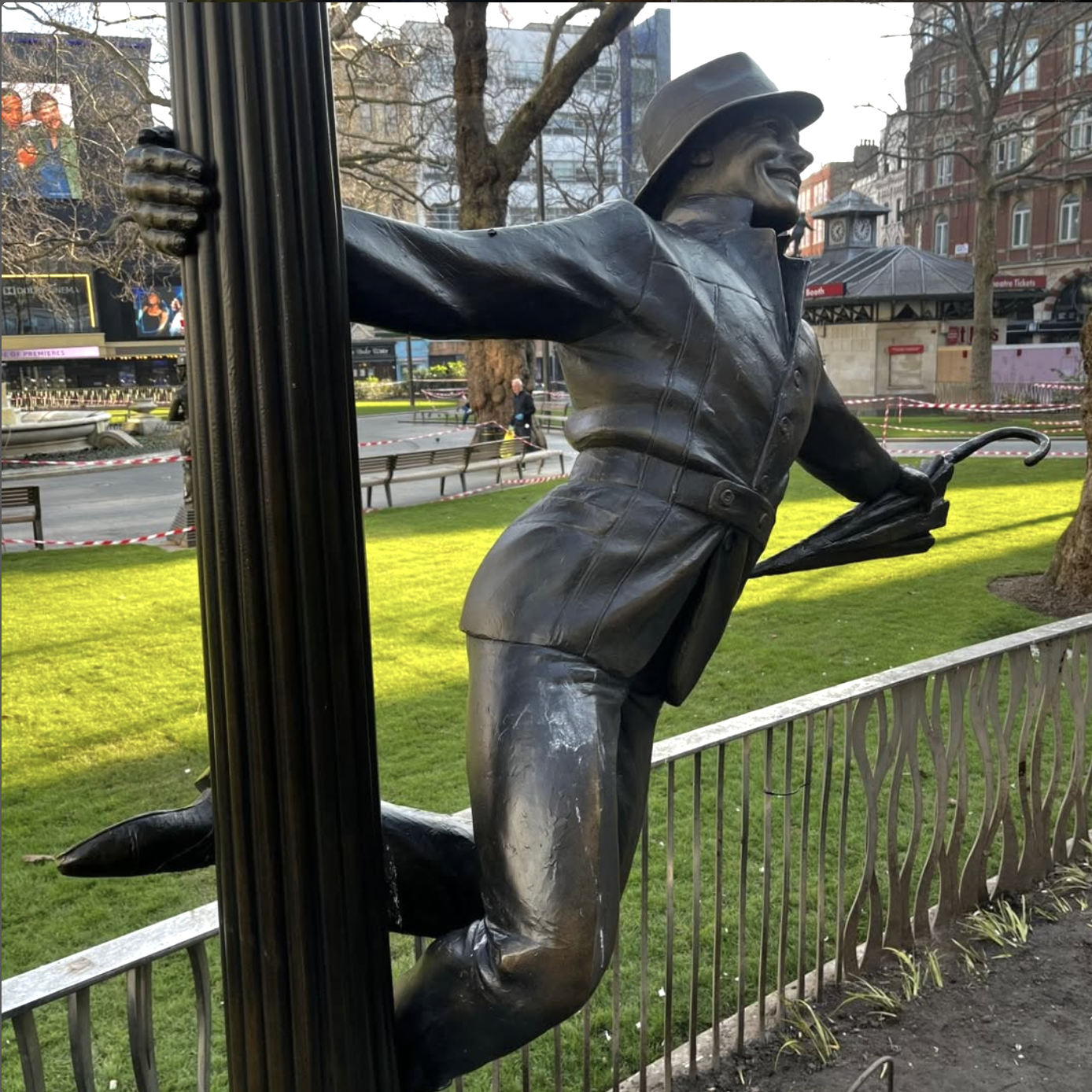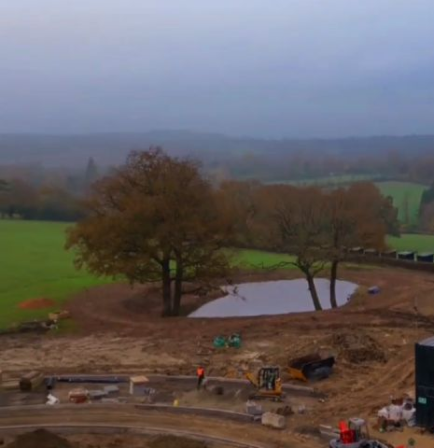Clover lawns are having a moment – and it’s easy to see why. They’re drought-resistant, require less mowing, and support local pollinators. But if you’re considering making the switch from traditional grass, you probably have questions.
We’ve gathered the most common queries about clover lawns to help you decide if it’s the right choice for your space.
Why is clover mixed with grass in lawns?
You might be wondering why our clover turf isn’t 100% clover. The answer comes down to creating a balanced, resilient lawn that performs beautifully in real-world conditions.
Pure clover lawns can become patchy and uneven over time. The grass varieties included in most clover lawn products provide structural support, helping maintain consistent coverage and a more uniform appearance. Think of grass as the backbone that holds everything together.
Grass also significantly improves wear tolerance. Whilst clover is remarkably tough, combining it with proven grass cultivars creates a surface that can better withstand regular foot traffic, garden furniture, and family activities.
Our Clover Rich Eco Turf uses this strategic blend alongside DoubleRoot – a world-first hybrid of white clover and Caucasian clover, developed in collaboration with Germinal Amenity. This combination gives you the environmental benefits of clover with the durability and appearance of a traditional lawn.
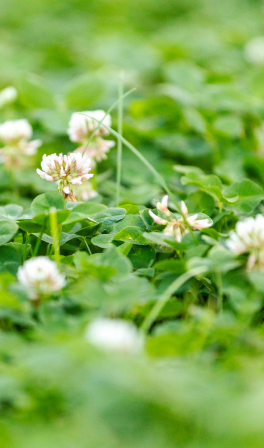
What’s the difference between clover lawns and wildflower lawns?
Both options offer eco-friendly alternatives to conventional turf, but they’re designed for different purposes and create distinctly different landscapes.
Clover lawns focus primarily on the practical benefits of clover plants. They feature clover (usually white Dutch clover or microclover) mixed with grass varieties, creating a low-maintenance lawn that fixes nitrogen naturally, resists drought, and stays green with minimal input. The aesthetic is cleaner and more uniform, similar to a traditional lawn but with white clover flowers appearing periodically. These lawns typically support pollinators when the clover blooms, but the focus is on functionality and reduced maintenance.
Wildflower meadow lawns are designed for maximum biodiversity and naturalistic beauty. True wildflower turf contains an 80/20 wildflower-to-grass mix featuring native species like oxeye daisy, meadow buttercup, knapweed, cornflower, yarrow, and many others. These create meadow-like spaces that support a wide range of pollinators throughout the growing season, offer rich seasonal interest, and promote wildlife-friendly gardening. The appearance is deliberately naturalistic rather than manicured.
Our Clover Rich Eco Turf is a clover lawn – it’s ideal if you want a practical, evergreen lawn with clover benefits, occasional white flowers, and a relatively traditional lawn appearance.
Our Species Rich Turf is genuine wildflower turf, containing over 30 different wildflower species in an 80/20 grass-to-wildflower mix. It’s perfect for those wanting to create beautiful, wildlife-friendly spaces with native wildflowers that bloom throughout the season.
Our Floral Lawn sits between these two options. It’s not a wildflower lawn in the traditional sense, but rather a charming blend of low-growing flowering plants (buttercups, daisies, clover, trefoil) with non-aggressive grasses. It offers more visual interest and pollinator support than a clover lawn, but with a softer, family-friendly aesthetic compared to a full wildflower meadow. It’s the perfect middle ground for those wanting natural beauty without going fully wild.
In short: choose a clover lawn for practical benefits with a traditional appearance, Floral Lawn for low-maintenance charm with cottage-garden appeal, or wildflower turf for maximum biodiversity and native meadow beauty.
How often do you need to mow a clover lawn?
One of the biggest advantages of clover lawns is the dramatically reduced mowing requirement – which means less time pushing a mower and lower carbon emissions.
Clover naturally grows to only 2-8 inches in height and grows much more slowly than traditional grass lawns. Most clover lawns need cutting every 2-4 weeks during the growing season, compared to weekly (or even twice-weekly) mowing for standard turf. Some homeowners choose to mow even less frequently, allowing the clover flowers to bloom and attract pollinators.
For flowering lawn mixes like our Floral Lawn, you can reduce mowing even further to every 2-3 weeks or less. These mixes work perfectly with initiatives like ‘No Mow May’. The frequency you choose will also influence the appearance – more frequent mowing (every 1-2 weeks) favours the grass component and keeps flowers minimal, whilst less frequent cutting allows the flowers to flourish and bloom.
Wildflower meadow lawns require a different approach entirely. Species Rich Turf should be cut just 2-3 times per year – typically in early spring and late summer/autumn – to maintain the wildflower balance and prevent aggressive species from dominating. This is meadow management rather than traditional lawn mowing.
One important note: if you overseed an existing grass lawn with clover, you’ll still need to mow regularly to manage the grass. The clover won’t significantly reduce your mowing frequency in mixed lawns where grass remains the dominant species. The mowing reduction really shines when clover or clover-grass blends are the intentional primary ground cover.
Are clover lawns safe for children?
Absolutely. Clover lawns are completely safe for children to enjoy – and in some ways, they’re actually safer than conventional turf.
Fewer chemicals: Because clover naturally fixes nitrogen from the air into the soil, there’s significantly less need for synthetic fertilisers. This means fewer chemicals in your garden where children play. The reduced maintenance requirements also mean less need for pesticides and weedkillers, creating a more natural environment.
Soft and comfortable: The texture of clover is soft and pleasant for bare feet and play. Clover lawns, flowering lawns, and wildflower turf are all capable of withstanding regular family activities without compromising safety or comfort.
The bee consideration: It’s worth noting that clover flowers do attract bees – which is wonderful for the environment and for supporting struggling pollinator populations. However, if anyone in your household has bee allergies, or if you have young children who might be frightened by bees, you can manage this by mowing before the flowers fully open. The white clover blooms are low to the ground, and a quick trim keeps them at bay whilst still providing all the other benefits of clover.
Are clover lawns safe for pets?
Absolutely. Clover lawns are completely safe for pets to enjoy – and in some ways, they’re actually safer than conventional turf.
Fewer chemicals: Because clover naturally fixes nitrogen from the air into the soil, there’s significantly less need for synthetic fertilisers. This means fewer chemicals in your garden where pets roam. The reduced maintenance requirements also mean less need for pesticides and weedkillers, creating a more natural environment.
Dog urine resistance: Clover is notably more resistant to dog urine damage (those unsightly brown spots) than traditional grass. The clover’s resilience helps the lawn recover more quickly from pet use, and many homeowners report their lawns looking healthier overall once they’ve added clover.
Unlike some wildflower species, white clover isn’t toxic to pets if nibbled, making it a worry-free choice for dog and cat owners.
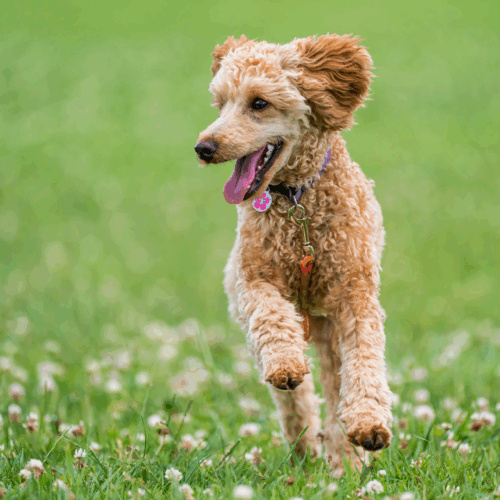
Does clover stay green in winter?
This is one of the most common concerns about clover lawns, and the good news is that clover performs better through winter than many people expect.
Clover is semi-evergreen, which means it stays green much longer than summer annuals. In mild UK winters (which are becoming increasingly common), white clover often remains green throughout the colder months. During particularly harsh cold spells, heavy frosts, or extended freezing temperatures, the clover may die back or turn brownish, but this is temporary – it greens up again as temperatures rise in spring.
Regional variation matters: Your location will significantly impact year-round appearance. In temperate regions with mild winters, clover can stay green virtually all year. In northern areas with harsh winters, you may see more winter die-back, though clover typically maintains better colour than many grass varieties.
The mixed lawn advantage: Because quality clover lawn products contain a strategic mix of grass and clover (rather than pure clover), you get the best of both worlds. The grass varieties provide consistent green coverage during the cooler months, whilst the clover delivers its peak performance during spring and summer when its drought resistance really shines.
The deep root systems of clover (reaching 8-12 inches or more into the soil) mean it often stays greener during summer droughts than traditional lawns, which can turn brown without regular watering. So whilst you might see slight browning in the depths of winter during a cold snap, you’ll likely see better summer colour than your neighbours’ grass-only lawns.
What about flowering lawns and wildflower turf? If you’ve chosen a flowering lawn like our Floral Lawn or wildflower turf like Species Rich, expect seasonal variation in appearance. The wildflowers will die back in winter (this is natural and part of their lifecycle), but the grass and clover base will maintain green coverage. This seasonal change is part of the charm and creates a dynamic, naturalistic lawn that evolves throughout the year.
Can clover lawns handle foot traffic?
Clover lawns can handle moderate to good foot traffic, but there are some important considerations depending on your specific needs.
Clover’s traffic tolerance: Clover is reasonably durable and can handle regular family use, garden parties, and everyday activities. White clover spreads through stolons (runners), which helps it recover from wear by naturally filling in damaged areas. However, clover isn’t quite as aggressive or as tough as grass when it comes to heavy, concentrated traffic.
Where clover excels:
- Regular family activities and garden use
- Areas where children play (though not intensive sports)
- Pathways with moderate use
- Garden spaces that see daily but not constant traffic
- Areas where pets roam and play
Where clover has limitations:
- Intensive sports areas or practice spaces
- High-traffic pathways that see constant use
- Areas where repetitive pivoting or concentrated activity occurs (think football practice or exercise routines)
The solution: grass-clover blends: This is precisely why most experts recommend mixing clover with grass rather than planting clover alone. A blend of 15-20% clover with 80-85% grass gives you clover’s benefits (nitrogen fixation, drought tolerance, reduced mowing) whilst maintaining the durability grass provides for foot traffic. The grass component absorbs the brunt of heavy use, whilst the clover supports overall lawn health.
Our Clover Rich Eco Turf combines grass and our exclusive DoubleRoot clover hybrid, specifically designed to be more tolerant to foot traffic than traditional grass monocultures. This makes it suitable for typical family gardens and moderate-use areas.
Our Floral Lawn is also resilient and family-friendly, capable of withstanding family activities, making it suitable for gardens where children play regularly.
For intensive sports areas or commercial play facilities that will experience constant, heavy traffic, a dedicated sports turf (like our Rysport Turf, selected from the Sports Turf Research Institute’s list of highly rated cultivars) would be more appropriate.
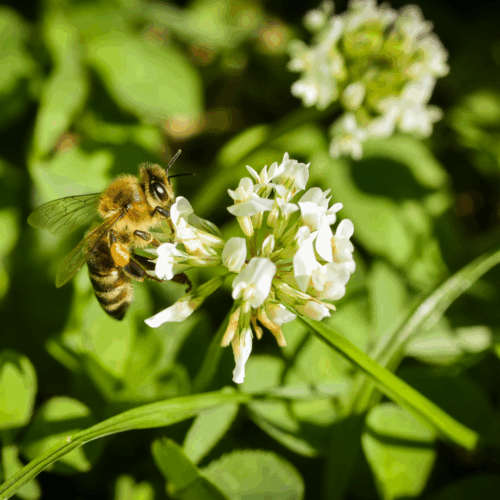
Do clover lawns attract bees?
Yes, clover lawns do attract bees – and whether this is a benefit or drawback depends entirely on your perspective and household circumstances.
Why clover attracts bees: Clover produces small white flowers (or pink/red flowers, depending on variety) that are rich in sweet nectar. Bees absolutely love them. This is actually one of clover’s greatest environmental benefits – at a time when bee populations are struggling, clover lawns provide crucial food sources for these essential pollinators.
The benefits: If you’re passionate about supporting local wildlife and pollinators, a clover lawn is an excellent choice. Bees pollinate not just clover, but also any fruit trees, vegetable gardens, or flowering plants nearby. Many homeowners find watching bees work through clover flowers to be peaceful and rewarding, and honey bees are generally docile when feeding.
Managing bee activity:
Mow before flowering: Regular mowing (every 1-2 weeks) keeps clover too short to produce flowers, eliminating bee attraction whilst retaining all other benefits like nitrogen fixation and drought tolerance
Mow strategically: You can mow just before gatherings or events to temporarily reduce flower presence
Important safety considerations: If anyone in your household has a bee allergy, you’ll need to carefully weigh the risks. Whilst bee stings from foraging honey bees are relatively rare (bees are generally non-aggressive when feeding), the risk does increase with ground-dwelling flowers. Similarly, if young children or pets regularly play barefoot or like to roll in the grass, the increased bee presence may be a concern.
Different products, different pollinator levels:
- Clover lawns attract primarily bees during clover flowering periods
- Floral Lawn attracts bees and other pollinators through its mix of buttercups, daisies, clover and other low-growing flowers
- Wildflower turf like Species Rich attracts the widest range of pollinators including butterflies, hoverflies, beetles, and various beneficial insects throughout a longer season, thanks to the diversity of native flowering species
Bottom line: bee attraction is one of clover’s key features, not a flaw. However, it’s an important factor to consider based on your household’s specific situation.
Will clover take over my garden?
This is a legitimate concern – clover’s vigorous spreading habit is both one of its greatest strengths and one of its potential drawbacks.
How clover spreads: White clover grows through stolons (horizontal stems that run along the ground), allowing it to spread and fill in bare patches quickly. This is excellent for creating dense ground cover and crowding out weeds, but it also means clover can travel beyond where you originally planted it.
Where clover might spread:
- Into flower beds and borders
- Through cracks in paving, driveways, and pathways
- Into neighbouring properties (if they don’t use selective herbicides)
- Over edging and into vegetable gardens
Managing spread: Fortunately, clover is relatively easy to control:
- Physical barriers: Proper lawn edging and borders effectively contain clover spread
- Regular trimming: Mowing along edges prevents stolons from creeping into unwanted areas
- Hand pulling: Clover is shallow-rooted and pulls easily from garden beds when caught early
- Selective herbicides: If clover invades areas where it’s unwanted, grass-safe broadleaf herbicides will eliminate it (though this defeats the environmental purpose of having clover in the first place)
Clover in grass-clover mixes: When clover is mixed with grass (the recommended approach), the grass provides competition that naturally limits clover’s spread. The balance between the two plants will fluctuate based on conditions – clover may increase during drought or in low-nitrogen soil, whilst grass may dominate in well-fertilised, well-watered conditions.
Is clover invasive? White clover (Trifolium repens) is not native to the UK – it was introduced from the Mediterranean region – and it can be considered invasive in certain contexts. However, it’s been part of British lawns and agriculture for centuries and is now naturalised. It’s far less aggressive than truly problematic invasive species, and its benefits typically outweigh concerns about spread in managed garden settings.
The verdict: Yes, clover will spread if given the opportunity, but it’s manageable with basic lawn maintenance. If you’re someone who prefers clearly defined, formal garden spaces with strict boundaries, you’ll need to stay on top of containment. If you prefer a more relaxed, cottage-garden approach, clover’s spreading habit will feel like less of an issue.
Ready to try clover?
Whether you choose Clover Rich Eco Turf for its practical, low-maintenance benefits, Floral Lawn for its charming cottage-garden aesthetic, or Species Rich Turf for maximum wildlife value, you’ll be creating a more sustainable garden that works with nature, not against it. All three options offer instant results compared to seeding, and they’re naturally sustainable without plastic reinforcement.
For traditional high-performance areas, our Rysport Turf provides the hard-wearing qualities you need, with cultivars specially selected for their depth of colour, luxuriant growth, and resistance to heavy use.
